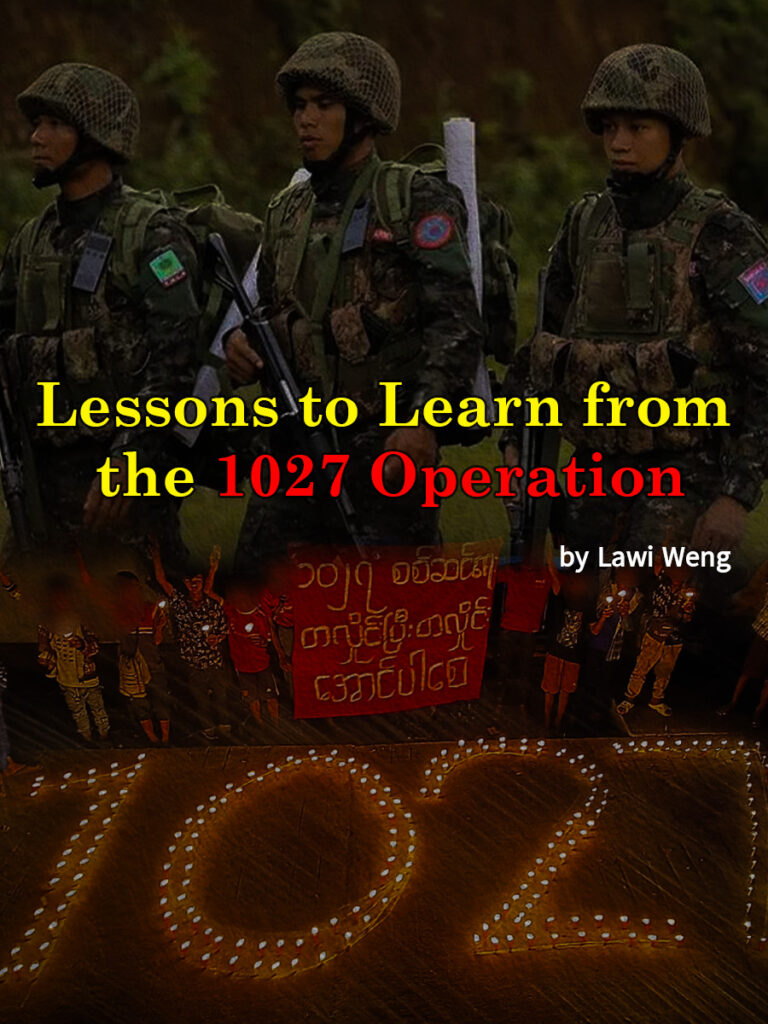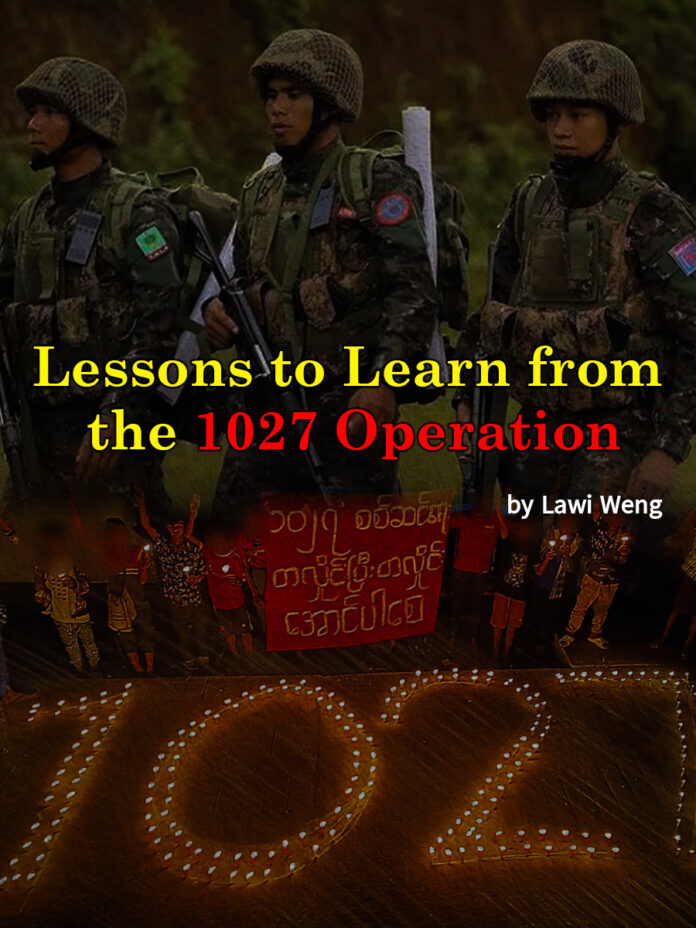By Lawi Weng (Opinion)
Today marks the second anniversary of the 1027 Operation—an offensive in which the ethnic armed organizations and Spring Revolutionary forces joined hands to strike Min Aung Hlaing’s military. It was one of the most effective campaigns ever waged against the junta. Yet, within that struggle, many brave fighters lost their lives, and many others returned wounded or dismembered. I cannot help but ask—have their sacrifices been truly worthwhile?
Across Myanmar, ethnic armed groups continue to fight Min Aung Hlaing’s army in different ways for their own freedom. But when we look back at the 1027 Northern Shan offensive, both the Ta’ang National Liberation Army (TNLA) and the Myanmar National Democratic Alliance Army (MNDAA or Kokang) stopped their advances once they captured the territories they desired.

Personally, I wished they had pressed forward—all the way to Mandalay. Instead, both groups later justified their halt with various reasons. They said that if they advanced into Bamar-majority towns, they would face harsh backlash from the Bamar people. But in truth, this was a war that most Bamars actually supported. At that time, there was no pressure from China yet.
From my observation, Chinese pressure only came after most of the civilians fled Lashio. By then, it was too late—they could no longer capture the town. Inside Mandalay, the junta troops were deeply worried, aware that the allied resistance forces could potentially reach the city. However, the day Min Aung Hlaing’s troops began recapturing some of the areas in Lashio that had been taken by the coalition forces was the day the dream of bringing down his army began to fade.
The weakness of the ethnic groups, I believe, lies in their narrow vision—they fight only for their own interests, not for the liberation of all people across the country. But true freedom cannot be achieved by one ethnic group alone.
Presently, the TNLA has shifted to a defensive position, and we are seeing them lose town after town. It is almost certain that the junta will attempt to retake every area they had lost.
This brings up a question regarding the Wa and Kokang forces: since they have entered ceasefire agreements with the junta, will they still be allowed to administer the towns they seized? And what if the junta demands, “Return the towns you captured during the 1027 Operation”? What will they do then?
The people in the central plains now understand the true intentions of the northern ethnic armed groups—they are fighting mainly for their own independence. The public knows this. They also understand that during the Spring Revolution, the People’s Defense Forces (PDFs) relied on these groups and learned from them.
But even amid this frustration, there is something positive. The PDF fighters have gained combat experience and access to weapons, enabling them to fight back and reclaim territories in Sagaing. However, the MNDAA’s ceasefire with the junta is, in my opinion, a shameful act.
Meanwhile, the Wa group has announced that, due to Chinese pressure, it will no longer supply weapons to other resistance forces. These actions have weakened public trust. Now, with only the TNLA still fighting the junta, the situation is like someone holding onto a tiger’s tail—unable to let go but unable to fight freely either.
Since this revolution began with armed resistance, the TNLA must continue to fight. But if the junta manages to retake all the towns the TNLA holds, then it will be the Wa and Kokang forces’ turn to face the junta’s pressure. When that happens, the Bamars will no longer support their fight, and even the PDFs might see them as opponents. If that day comes—if these groups become isolated—the war will ultimately be won by Min Aung Hlaing’s army.
The Spring Revolution is meant to be a struggle for the liberation of the entire country—a fight where both ethnic groups and Bamars unite. But if ethnic groups continue fighting only for their own autonomy, the lesson from Northern Shan’s 1027 Operation is one we must all learn and never forget.

